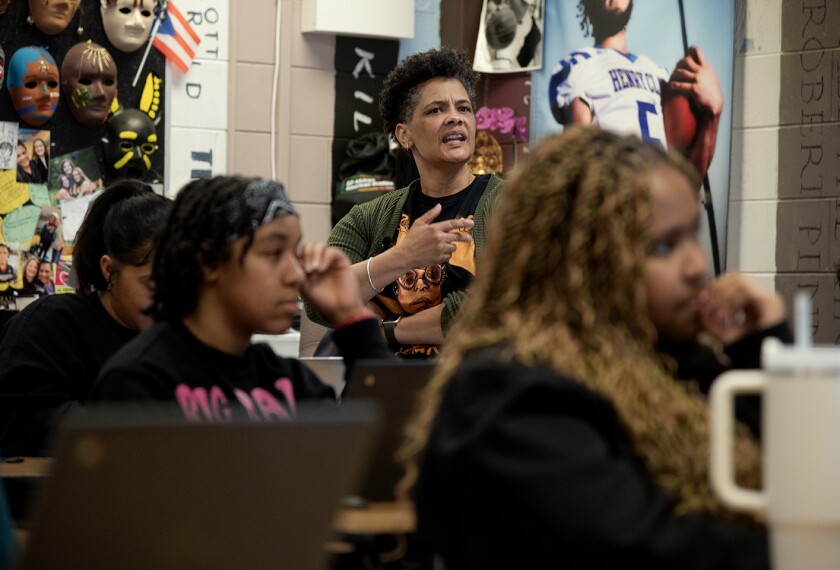The following offers highlights of the recent legislative sessions. Precollegiate enrollment figures are based on fall 2004 data reported by state officials for public elementary and secondary schools. The figures for precollegiate education spending do not include federal flow-through funds, unless noted.
Kentucky
Gov. Ernie Fletcher’s successful effort this year to persuade the legislature to overhaul Kentucky’s tax system will pay dividends for schools next year.
The tax changes yielded an extra $130 million for the coming fiscal year, Mr. Fletcher said in an interview last week. “That gave us a bridge to start some initiatives in education,” the first-term Republican governor added.
|
The two largest of those initiatives aim at improving elementary school achievement in reading and mathematics. With the goal of getting all pupils reading at grade level by the end of 3rd grade, the $11.1 million Read to Achieve program will provide diagnostic screening and interventions in every public elementary school. A $3.9 million program will provide similar services in math.
Lawmakers failed to agree to a statewide budget in last year’s session, but Gov. Fletcher used his executive authority to keep the state operating. In the budget passed last month for the 2005 and 2006 fiscal years, precollegiate spending will jump from $2.9 billion in fiscal 2004 to $3.4 billion in 2006—a 15 percent increase over the biennium. State per-pupil aid will increase from $3,191 to $3,445 over the same period—an 8 percent rise. Preschool spending will climb from $44.8 million to $51.6 million over the biennium, a 15 percent increase. The total operating budget for fiscal 2006 will be $8.2 billion.
In other action, legislators passed an anti-obesity bill that forbids the sale of high-fat snacks and sodas in school vending machines. The bill requires K-5 schools to give students opportunities for “moderate to vigorous physical activity” for up to 30 minutes a day.
School officials are awaiting regulations from the state board of education defining exactly what that exercise will be. That exercise could be as simple as a few minutes of calisthenics or a walk around school grounds.





